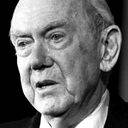![]()
Graham Greene
The
Life of (Henry) Graham Greene (1904-1991) Greene, an English novelist, short-story teller, playwright and journalist, is one of the most widely read novelist of the 20th century. His novels treat moral issues in the context of political settings; adventure and suspense are constant elements in his novels and many of his books have been made into successful films. Greene was a candidate for the Nobel Prize for Literature several times, but he never received the award. Born in Berkhamsted, Hertfordshire, Graham Greene was one of the three children to Charles Greene, the headmaster of Berkhamsted School, and Marion Raymond Greene, a first cousin of the author Robert Louis Stevenson. Greene was educated at Balliol College, Oxford, and had a natural talent for writing. In 1926, he converted to Roman Catholicism. Greene adored T. S. Eliot and Herbert Read; as a young man, his analyst introduced him to a literary circle. After he graduated, he worked as a sub-editor at the Times of London (1926-1930) and at the Spectators, where he was a film critic and a literary editor until 1940. Besides, during the WWII, he also worked for the British Foreign Office, and the Secret Intelligence Service (SIS) sent him to Sierra Leone. He later worked under Kim Philby, a future defector to the Soviet Union. In 1927, he married Vivien Dayrell-Browning. He separated from his wife in 1948, but they never divorced. After the collapse of their marriage, he had several relationships, among others in the 1950s with the Swedish actress Anita Björk. During the 1920s and 1930s Greene had, according to his own private reckoning, some sort of relationship with no less than 47 prostitutes. In 1938, Greene began another affair with Dorothy Glover, a theatre costume designer and a book illustrator. Among all his relationships with women, the one with Catherine Walston was the most important. The role of Catherine as Greene¡¦s mistress and muse, roughly between 1946 and 1957, has been an open secret to Greene scholars and among his family and friends for many years. The End of the Affair (1951) was partly based on this affair. In real life, Greene met Mrs. Walston after her conversion to Roman Catholicism, when she asked him to be her godfather. He was 42 then and internationally celebrated for novels; she was 30, and the mother of 6 children. Greene was always tortured by the affair, and left in his personal papers a fascinating trail of clues as to the importance of the relationship in his life, though he never revealed this affair in his autobiographies. Greene¡¦s ability to create debate and his practical jokes brought him often into headlines. For instance, in 1933, Greene wrote in the magazine Night and Day criticizing Shirley Temple, a 9-year-old American actress, that ¡§her admirers¡Xmiddle-aged men and clergymen¡Xrespond to her dubious coquetry, to the sigh of her well-shaped and desirable little body, packed with enormous vitality¡K¡¨ This time Greene had to pay for his remark, for he was sued by Twentieth Century Fox for the comments. As a writer Greene was very prolific and versatile. Many of his novels are based on his own experiences as an agent in the British Foreign Office. The Asian settings also stimulated Greene¡¦s many novels. He wrote 5 dramas and screenplays for several films based on his novels. Greene¡¦s film reviews are still worth reading and often better than the film he praised or slashed. Although Greene knew that some critics considered his novels entertainment, his own models were Henry James, Joseph Conrad, and Ford Madox Ford. In his personal library was a large collection of James¡¦s work. Perhaps the ultimate moralist thriller-writer, Greene had a facility for combing literary observation with populist plot, and himself divided his books into serious fiction and ¡§entertainments¡¨. Evelyn Waugh, also a famous English writer, singled out for praise the new coolly cinematic quality of his style, but he is now most known for a sort of atheistic Catholicism. Aside
from his exotic trips, Greene¡¦s also achieved notoriety in his
personal life. Greene¡¦s
financial success as an author enabled him to live very comfortably in
London, Antibes, and Capri. Towards
the end of his life, Greene lived in Vevey, Switzerland with his
companion Yvonne Cloetta. He
died there peacefully on April 3, 1991.
Greene |
¡@


